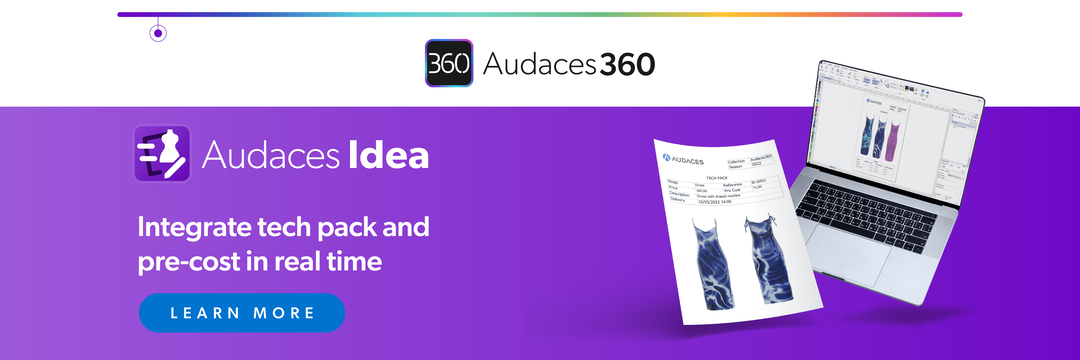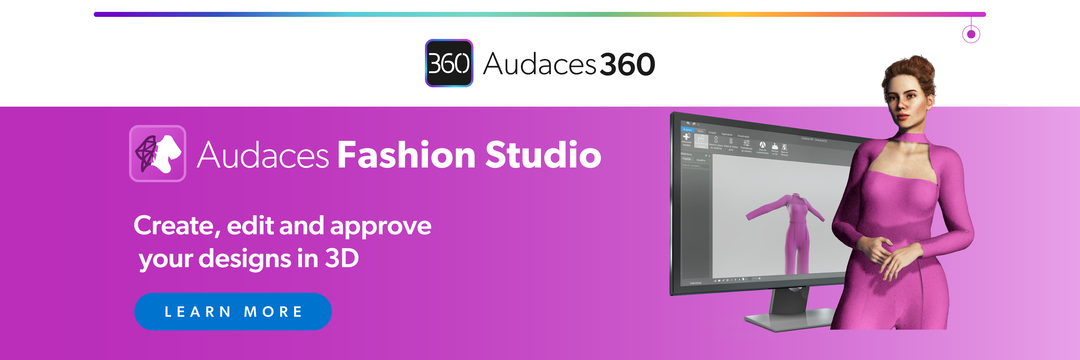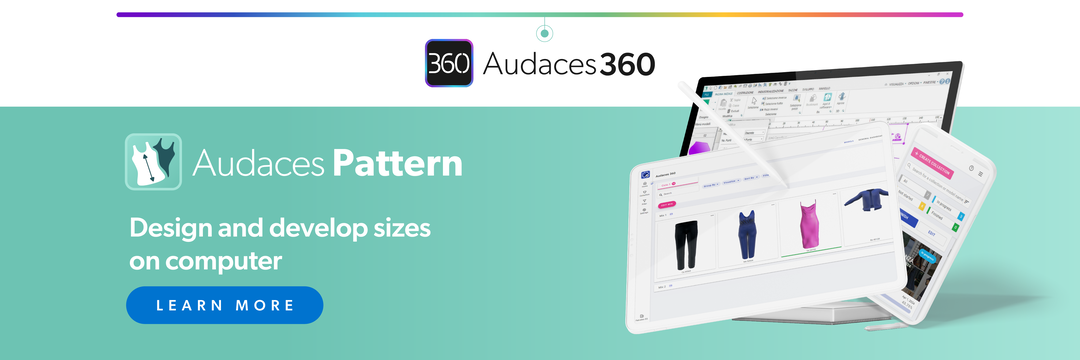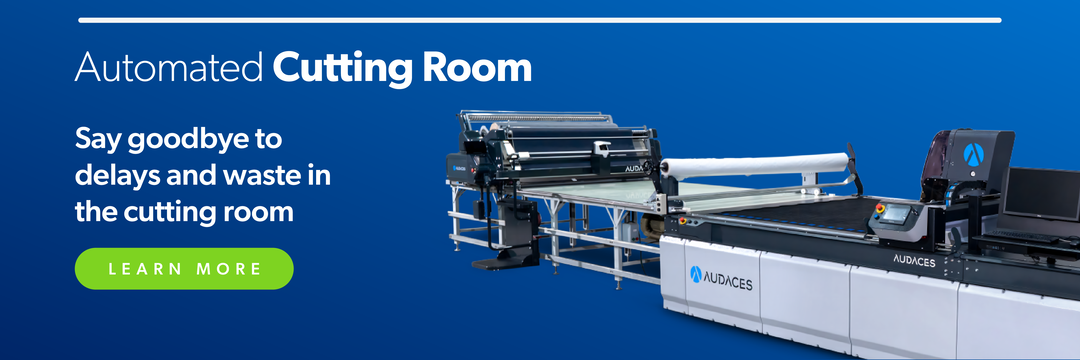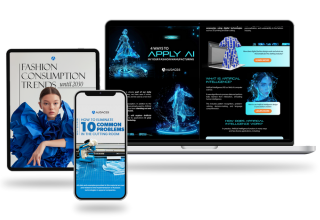Summary
- Discover the most widespread misconceptions about fashion AI and separate fact from fiction.
- Learn how it can actually benefit your design, production, and marketing processes.
- Ready to harness technology for your brand? Subscribe to our newsletter for more insights!
Fashion brands today face an overwhelming amount of data, trends, and consumer demands. As professionals, we know that keeping up while staying creative can be a real challenge.
This is where fashion AI comes in. It provides tools to analyze trends, predict customer preferences, and optimize production. All with one important point: it supports designers rather than replaces them.
We want to challenge any prejudices you might have by uncovering the truth behind common myths. By doing so, you’ll gain clarity on how AI can boost your brand’s growth, innovation, and competitiveness.
Happy reading!
Sumário
What is fashion AI?
Fashion AI is the application of Artificial Intelligence technologies specifically for the fashion industry. It combines data analysis, machine learning, and automation. These tools assist in design, production, trend forecasting, and customer engagement.
Its goal is not to replace human creativity. It’s to enhance it, making processes faster, more accurate, and more informed.
At its core, fashion AI leverages large datasets, from social media trends to sales history. The goal i to identify patterns and insights that would take humans much longer to discover.
For example, it can predict which colors, fabrics, or styles are likely to be popular in upcoming seasons. It gives designers and brands a great competitive advantage.
The origin of fashion AI
The roots of fashion AI trace back to the broader development of artificial intelligence in the mid-20th century. Early AI research focused on creating machines that could learn, reason, and solve problems.
While these efforts were initially theoretical, they laid the foundation for the applications we see today.
The first practical use of AI in fashion began with predictive analytics. Brands started using algorithms to forecast sales trends, optimize stock, and analyze consumer behavior.
These early applications demonstrated how AI could provide data-driven insights that were previously impossible to achieve manually.
Today, Artificial Intelligence in fashion is a combination of sophisticated technologies and practical applications. It’s no longer limited to large corporations: small and medium fashion brands can also leverage AI.
How does fashion AI work?
Fashion AI works by collecting and analyzing vast amounts of data from multiple sources. These sources can include sales figures, social media posts, fashion shows, and consumer reviews.
Algorithms process this information to identify patterns, trends, and correlations that would be difficult for humans to detect.
It’s important to notice that machine learning is one of the major forces in AI models. By training algorithms on historical data, AI tools learn to make predictions and recommendations. For example, a system can predict which styles are likely to sell well based on previous season trends.
The more data the system processes, the more accurate its predictions become over time.
Learn more: How to use Artificial Intelligence design in your fashion creation
Main types of fashion AI
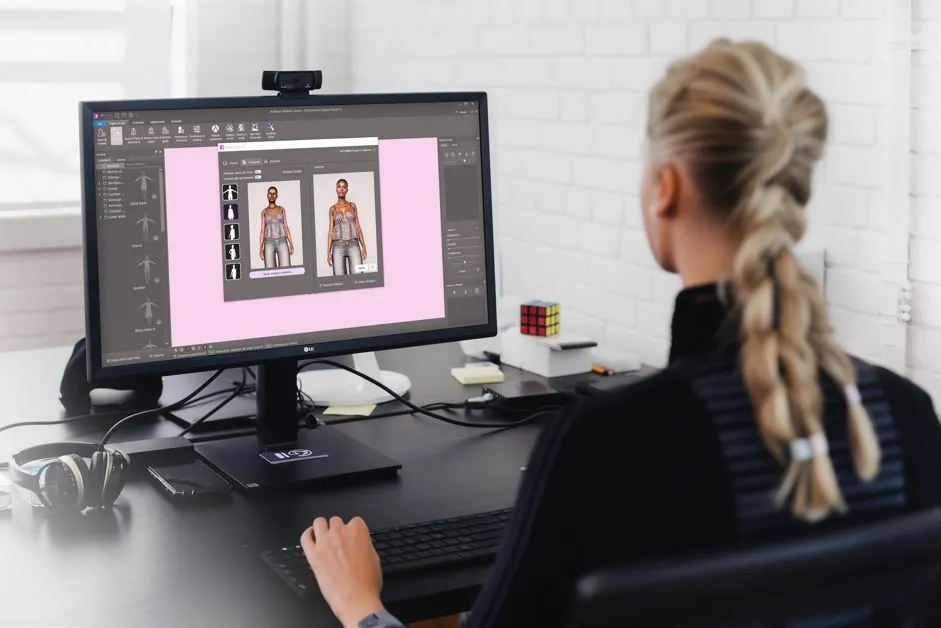
We can categorize fashion AI into two main types, depending on its capabilities and purpose:
Strong Artificial Intelligence
Strong AI refers to systems that can perform tasks requiring human-level intelligence. These systems are capable of reasoning, problem-solving, and adapting to new situations without human intervention.
In theory, strong AI could understand fashion design principles, predict trends, and even create original designs on its own.
Weak Artificial Intelligence
Weak AI (or narrow AI) focuses on performing specific tasks efficiently. They handle functions like trend forecasting, inventory management, or personalized recommendations.
However, they cannot think or reason beyond their programmed capabilities.
Learn more: How can fashion technology boost your production?
Artificial Intelligence and machine learning: everything you need to know
Artificial Intelligence and Machine Learning are closely connected, but they’re not the same thing.
AI is the broad concept of creating machines capable of performing tasks that normally require human intelligence.
Machine Learning, on the other hand, is a specific subset of AI. It focuses on teaching systems to learn and improve automatically through experience.
Here are other concepts, simply explained, that will help you better understand how this technology works:
Neural networks
These are algorithms inspired by the structure of the human brain. They consist of layers of connected “neurons” that process information, recognize patterns, and make decisions.
Each connection between neurons adjusts automatically based on the data it receives. This capability allows the system to learn and improve over time.
Deep learning
Deep Learning is an advanced form of Machine Learning. It uses multiple layers of neural networks to process data at a deeper level.
Traditional ML models need humans to choose which features to analyze. In contrast, deep learning systems find the most important patterns on their own.
Computer vision
It enables machines to interpret and understand visual information from the world, just like the human eye does. In fashion, it analyzes images, videos, and live camera feeds to extract meaningful insights.
This technology powers tools that can recognize garments, identify design elements, and even assess quality control during production.
Natural language processing (NLP)
Natural Language Processing enables machines to understand, interpret, and generate human language.
In the fashion world, this technology helps brands analyze written data. They can include customer reviews, social media comments, and online feedback to uncover insights about consumer sentiment and preferences.
With NLP, fashion companies can identify what customers love or dislike about their products.
Looking to see how technology can assist your creative process? Download our exclusive resource and learn how to apply Artificial Intelligence in fashion!
Pros and cons of Artificial Intelligence
Like any powerful technology, Artificial Intelligence brings both opportunities and challenges that fashion businesses should understand before adopting it.
Pros
- Improves efficiency: Automates repetitive and time-consuming tasks, allowing professionals to focus on creativity and strategic decisions.
- Supports data-driven insights: Analyzes large volumes of information to uncover patterns and improve decision-making accuracy.
- Enables personalization: Helps fashion brands offer tailored shopping experiences, increasing customer satisfaction and loyalty.
- Enhances sustainability: Optimizes material usage, reduces waste, and improves energy efficiency across production stages.
- Reduces human error: By relying on data and algorithms, AI minimizes mistakes caused by fatigue or manual miscalculations.
- Boosts innovation: Provides creative insights, forecasts trends, and assists in product development through predictive analytics.
Cons
- Dependence on data quality: Poor or incomplete data can lead to inaccurate predictions and outcomes.
- Limited human touch: Over-automation may make processes or customer interactions feel impersonal.
- Privacy concerns: Collecting and analyzing user data raises questions about consent and data protection.
- Risk of overreliance: Depending too much on AI can limit human creativity and intuition in decision-making.
Examples of Artificial Intelligence in everyday life
We bet many tools you use every day are so common that you don’t even know they’re AI!
Check out the list we’ve put together:
- Personal assistants: Tools like ChatGPT and Gemini can generate text, answer questions, summarize content, and help with tasks.
- Product recommendations: E-commerce platforms use AI to analyze user behavior and suggest items that match their preferences.
- Chatbots: Many websites and fashion brands use AI chatbots to provide instant customer service and answer common questions.
- Navigation apps: Applications like Google Maps use AI to analyze traffic data and suggest the fastest routes.
- Facial recognition: AI systems can identify people in photos or videos, helping enhance security and personalize digital experiences.
- Social media algorithms: Platforms like Instagram and TikTok rely on AI to recommend content based on user interests.
- Email filters: AI helps automatically sort spam, promotions, and priority messages to keep inboxes organized.
- Virtual try-ons: They enable customers to visualize how garments will look on them before making a purchase.
4 popular myths about Artificial Intelligence

Artificial Intelligence evokes fascination and fear at the same time. Its potential is enormous, but many misconceptions still create confusion about what AI can and cannot do.
1) “Using Artificial Intelligence eliminates jobs”
One of the most common fears about AI is that it will replace human workers entirely. While automation can handle repetitive or data-heavy tasks, it doesn’t eliminate the need for people.
Instead, it changes the nature of work by freeing professionals from routine duties. This way, they can focus on strategy, creativity, and problem-solving.
2) “There is no control over AI algorithms”
Another myth is that AI systems act without human oversight. In reality, experts design, train, and monitor AI models with rules and objectives. The outcomes depend directly on the data and parameters established during development.
3) “Artificial Intelligence is superior to human ability”
While AI can process data faster and more accurately than humans, it lacks creativity, emotional intelligence, and cultural understanding.
These uniquely human traits are essential in industries like fashion, where aesthetics, storytelling, and intuition play major roles.
AI is most effective when used as a support system, not as a replacement.
4) “Artificial Intelligence is not reliable”
Some people worry that AI systems make mistakes or are not trustful. Like any technology, AI’s reliability depends on how we develop and implement it. When trained on high-quality data and supervised correctly, it delivers consistent, accurate results.
With proper management and continuous improvement, AI becomes a dependable ally for innovation and efficiency.
Automation applications in fashion and their benefits
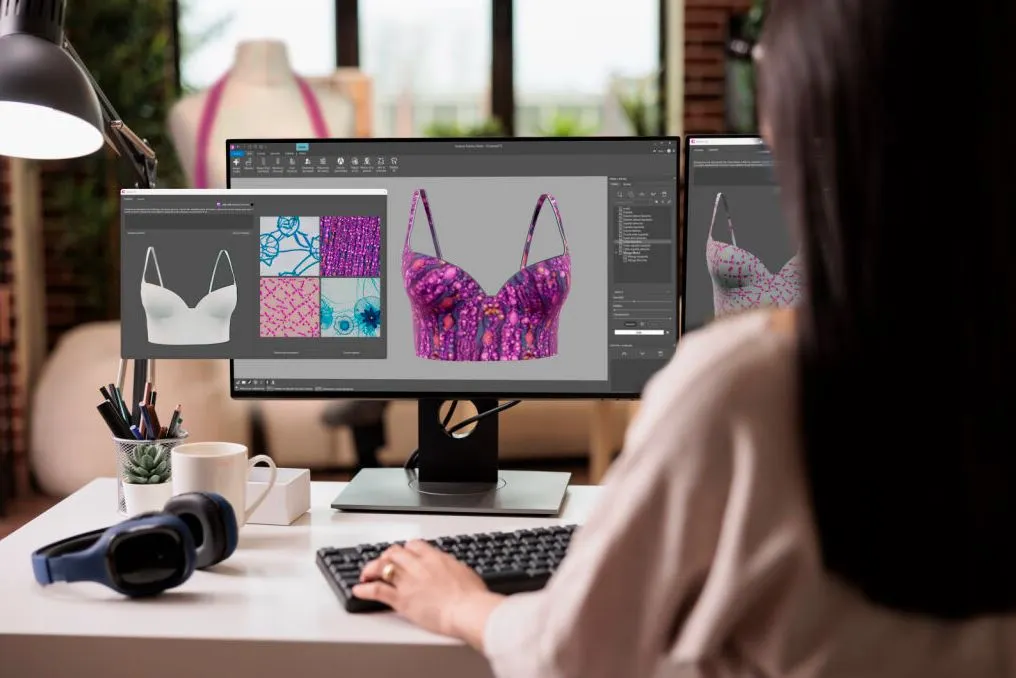
Trend forecasting
Unlike traditional forecasting, which often relies on intuition and manual research, AI provides real-time insights with greater accuracy.
Designers and product developers can quickly adjust to shifts in consumer preferences. It’s a way of reducing the risk of overproduction and improving the overall appeal of their collections.
Learn more: Uncover the benefits of fashion trend forecasting for your clothing business
Design automation
Artificial Intelligence has also revolutionized the creative process. With solutions like Audaces Sofia, designers can transform hand-drawn sketches into realistic digital images in seconds.
AI can also generate print patterns, suggest design variations, and create new pieces from simple text prompts
Industrial automation
In production, automation supported by fashion AI ensures higher precision, consistency, and efficiency.
Smart cutting machines, automated spreading systems, and digital pattern adjustments minimize errors and reduce fabric waste. This not only accelerates the manufacturing process but also helps companies meet deadlines and maintain quality standards.
Learn more: Understand the importance of the textile industry and its evolution
Supply chain management
AI is reshaping supply chain management by improving visibility and decision-making at every stage. Through predictive analytics, it can anticipate changes in demand, identify potential delays, and recommend adjustments to keep operations running smoothly.
Learn more: How to overcome the challenges in the textile industry’s supply chain
Why should I invest in fashion AI for my apparel business?
Investing in Fashion AI is more than adopting a new technology. It’s a step toward entering the future of fashion, building a smarter, more competitive business.
Technology helps fashion companies streamline operations, reduce costs, and make more confident, data-driven decisions. From design to production, every stage of the value chain can benefit from AI-driven optimization.
For designers and creative teams, AI offers a new source of inspiration and precision.
Learn more: Explore all you need to know about fashion creation
Leverage fashion AI for your business with Audaces!
Audaces Sofia
Meet Audaces Sofia, our cutting-edge fashion Artificial Intelligence. It helps you enhance your creations with an unlimited source of inspiration.
This solution has the power to transform concepts into realistic images in just a few clicks. Some simple prompts are all you need to generate print variations.
Audaces Sofia integrates with Audaces Idea and Audaces Fashion Studio. This combination provides you with the complete solution to create effortlessly.
Discover Audaces360 and unlock a world of possibilities for fashion design and production. Explore our comprehensive suite of solutions today!
FAQ
Fashion AI is the application of Artificial Intelligence technologies specifically for the fashion industry. These tools assist in design, production, trend forecasting, and customer engagement.
Fashion AI works by collecting and analyzing vast amounts of data from multiple sources. These sources can include sales figures, social media posts, fashion shows, and consumer reviews.
Investing in Fashion AI is more than adopting a new technology. It’s a step toward entering the future of fashion, building a smarter, more competitive business.


